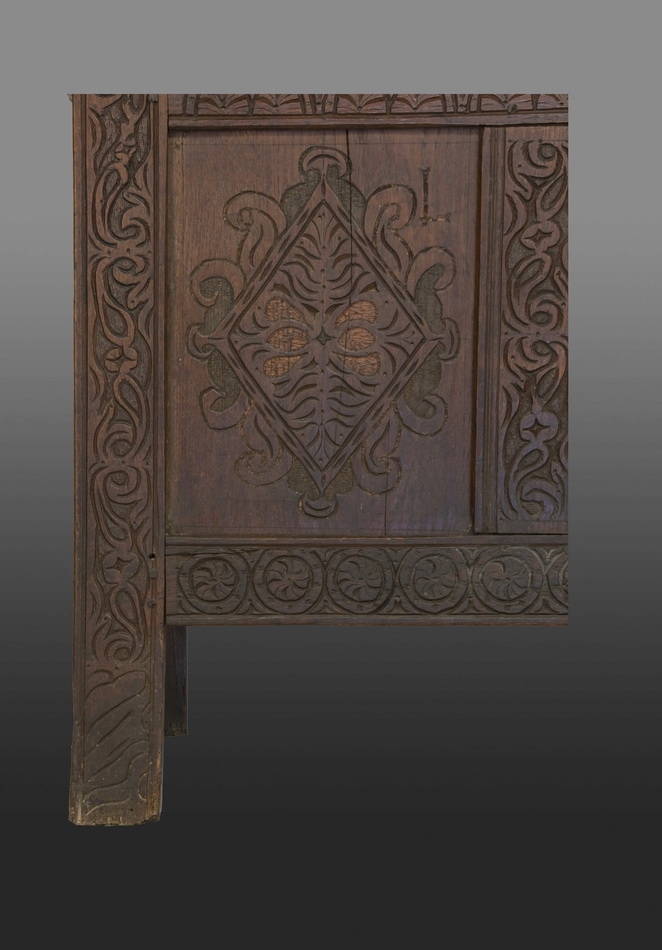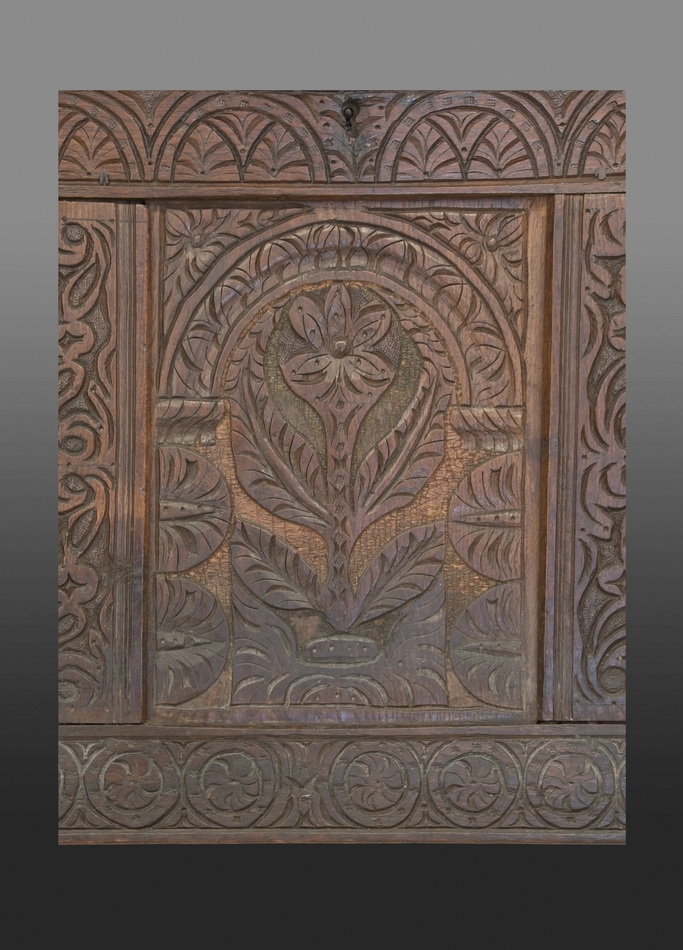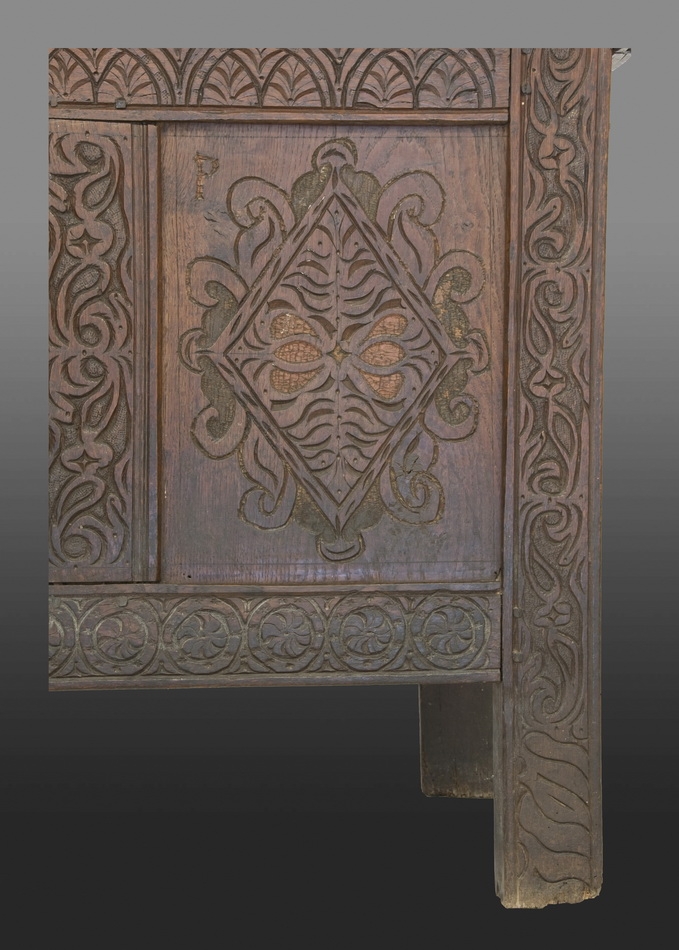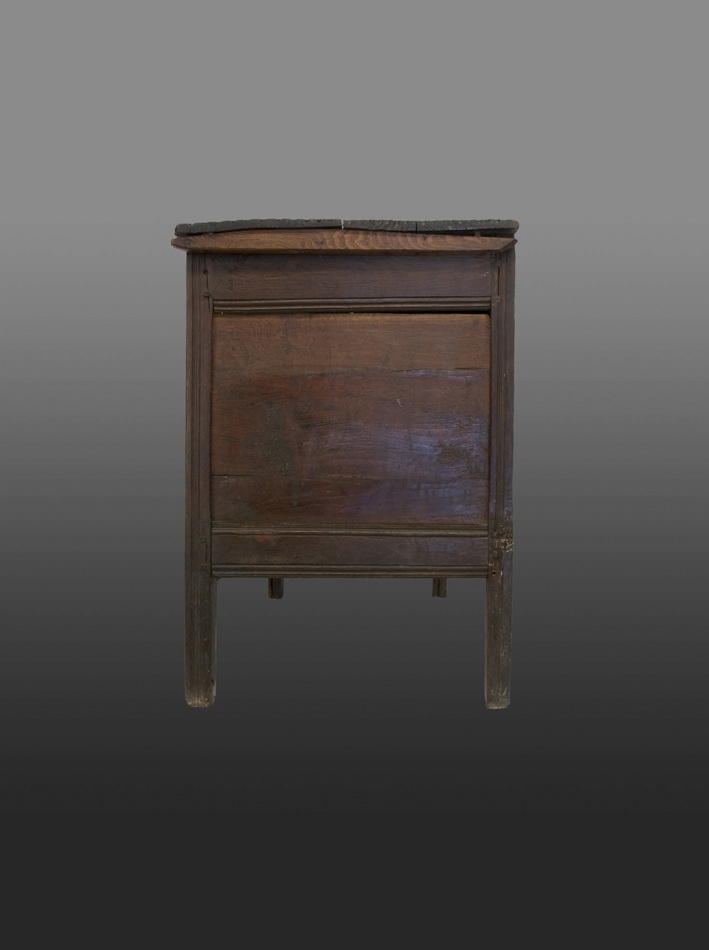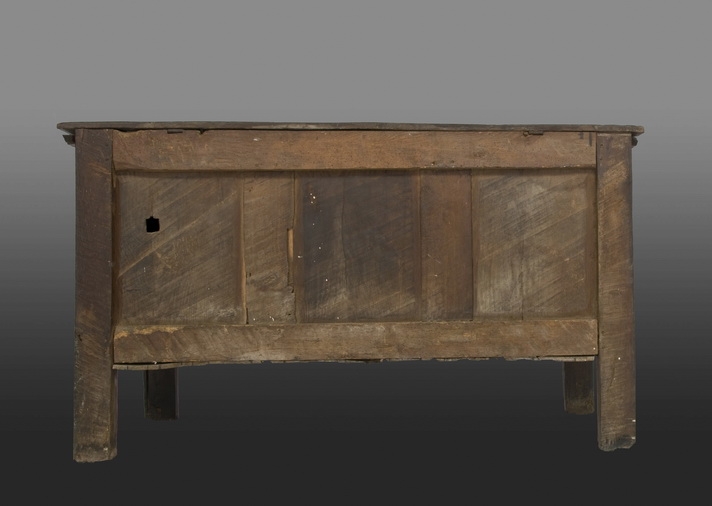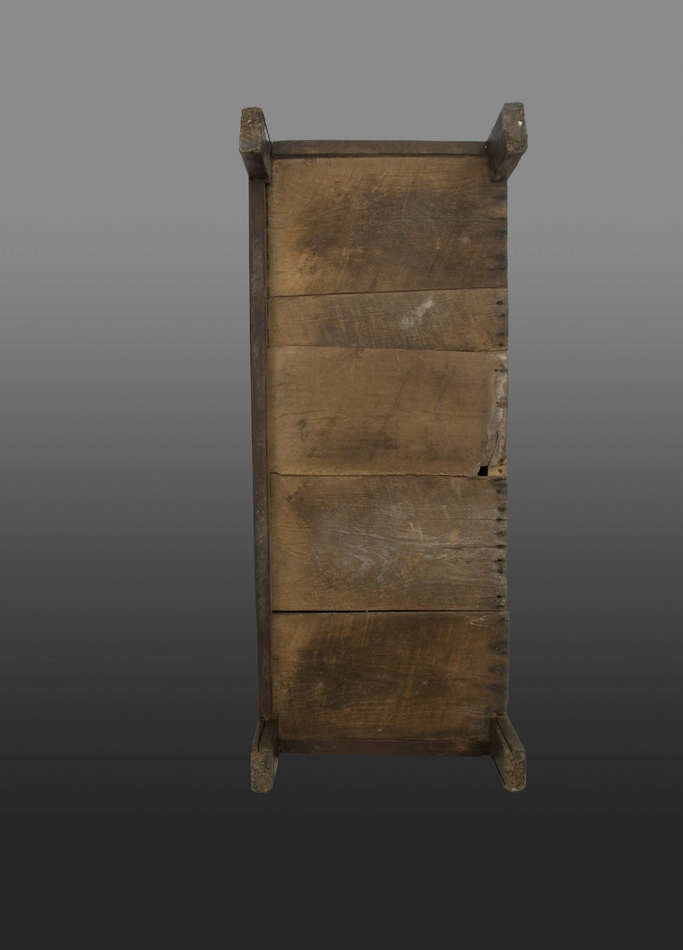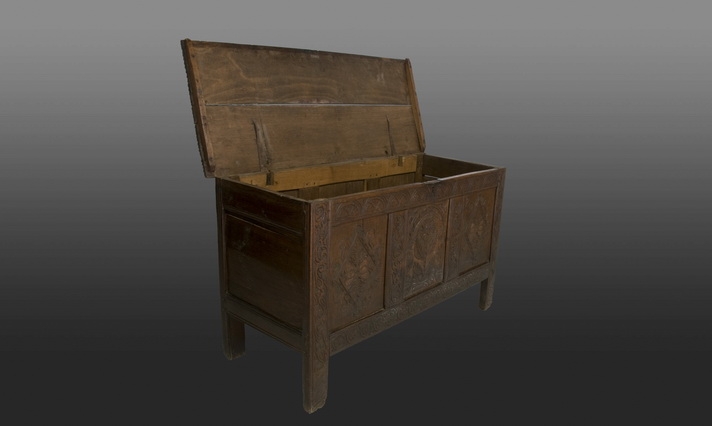Charles II East Devon chest
17th century
Exeter, Devon
W 56.5" × H 32" × D 22.25"
Stock # Ex8
SOLD
This chest was constructed within the same workshop as (cats. 6-7, 13-16), and likely by a joiner working a generation or more later than, the master artisan responsible for cat. 6. This is also the same workshop in which Thomas Dennis likely served his apprenticeship. The generational decline of carving design in Exeter joinery fails to account sufficiently for the coarseness with which the carving of this chest is executed. Economic considerations also fail to provide adequate explanation even if a project was to be conducted with a minimum expenditure of time and effort, a skilled joiner would still work with a level of precision that is simply not present in this chest. It is far more likely that the joiner who made the chest was an apprentice and not yet able to work with the accuracy and efficiency of a mature and independent artisan. The v-tool incised lines of the carving wobble aimlessly and continuously in depth, betraying an unsteady and unconfident hand. The pattern is filled with inconsistencies and numerous missed passages, gouge-strikes, and portions of punch-work. Perhaps the finished chest was never intended for a public client but was simply an experiment for the apprentice's own purposes. Timber employed in this chest reflects the low prioritization of this project by the workshop. The oak is of shockingly poor quality and is used with such parsimony as to imperil the structural integrity of the completed object. It is rife with sapwood, knots, and wane. The rear muntins are so meager in cross-section that they barely contain the feathered edges of the back panels which are thin enough to be virtually translucent in places. Both back rails are not oak, but elm that, while cheaper and more abundant, was perilously prone to damage and insect infestation. When compared with the superior timber of late sixteenth-century Exeter joined furniture, the timber employed in this chest the severe wood shortage that plagued Exeter's woodworking artisans throughout the seventeenth century.
This chest remains an interesting and extremely well preserved document of correspondence between the carving practices of different Exeter joiners with their New England counterparts. The most visible link between this chest and the work of others joiners active with this single, multigenerational Exeter workshop is its lid. The original lids which survive on this and four other known joined chests produced by this shop (cats. 6, 14-15) are of nearly identical structural and ornamental configuration: two longitudinal planks roughly equal in depth with squared side edges; the rear edge ornamented with a run of V-V-ogee moulding; both sides incised with a saw-tooth pattern further adorned with small, circular punches; the cleats secured with heavy pins driven from above. This chest, like cat. 7, bears incised initial on the front panels. Qualitative differences aside, the joiner responsible for this chest shared many practices with members of the Dennis Shop in New England. These include the use of an arrangement of a vertical stem supporting a flowerhead and flanking asymmetric leaves, and the V-V-ogee moulding. The front flanking panels are carved with a motif that, although not represented on any known objects constructed by Thomas Dennis, does appear on works by journeyman or apprentices within the Dennis Shop: a large foliated lozenge that terminates above and below in a small reversing scroll resembling a cap. This chest also serves to introduce an ornamental pattern peculiar to later seventeenth-century Exeter joined furniture that, along with the V-V-ogee moulding and the use of polychromy, links multiple distinct joiners workshops within a larger artisanal network. This consists of a sequence of alternating single thin s-crolls which meet at a diamond motif
Condition Notes
Original polychromy. Hinges replaced.

